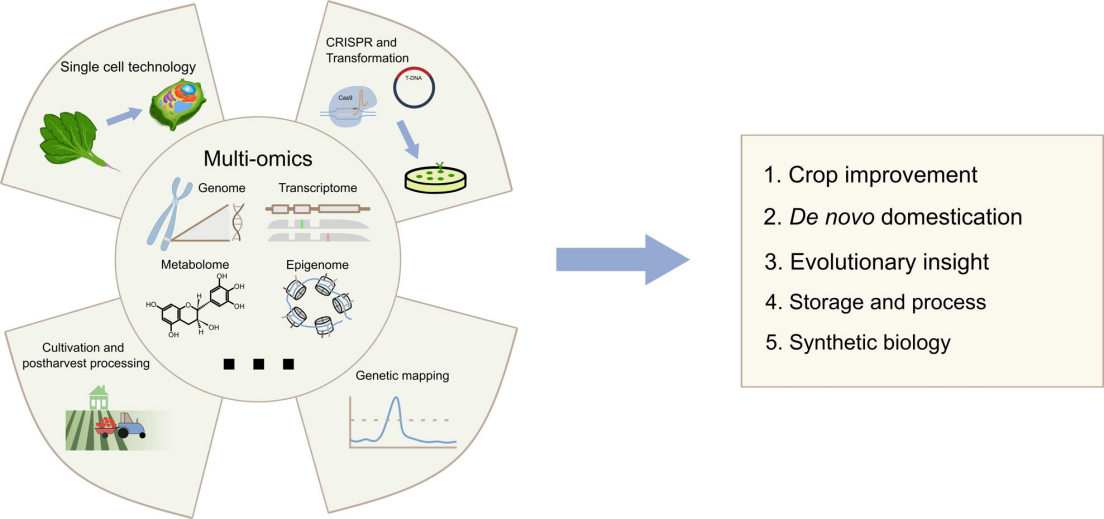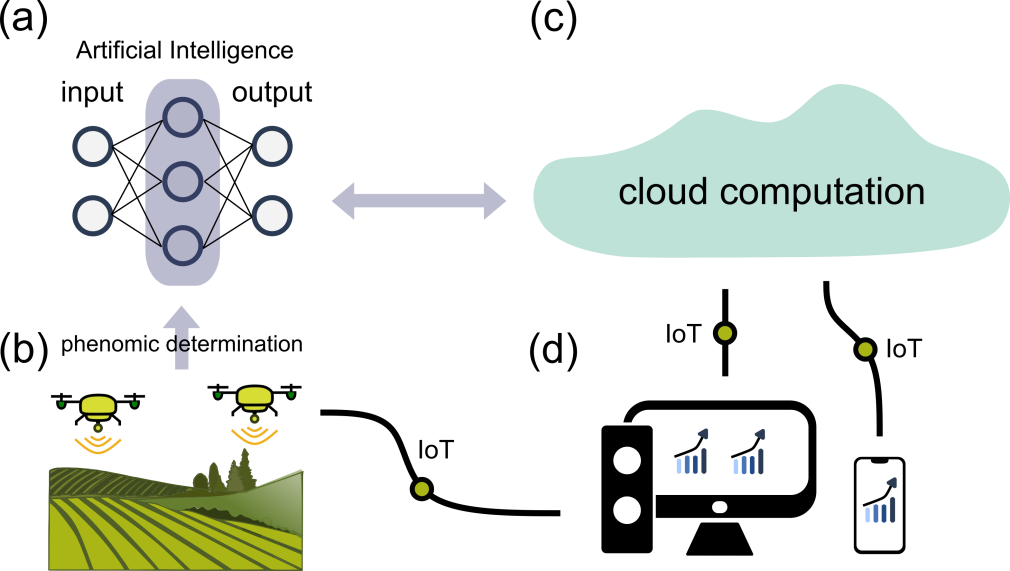南湖新闻网讯(通讯员 姜晓辉)近日,受The Plant Journal邀请,我校园艺植物生物学教育部重点实验室闻玮玮教授课题组联合广东省农业农业科学院茶叶研究所、中国农业科学院深圳基因组所等单位发表了题为“Combining novel technologies with interdisciplinary basic research to enhance horticultural crops”的长篇观点文章。
园艺作物主要涵盖了果、蔬、花、茶等物种,在提供更多样化营养物质,保障人类食品安全的同时,其观赏性和广泛用途也丰富了人们的日常生活。然而,随着全球气候持续恶化,人口增加,可耕种的土地逐渐减少,园艺作物生产面临着越来越严峻的挑战。

新兴技术和多学科融合促进园艺生产
本文在阐述园艺作物的特点的基础上,综述了园艺学科在基因组等多组学、遗传育种、生物技术及其利用和智慧园艺等方面的研究进展,提出基础研究和生产应用中面临的问题,并展望了在多学科交叉融合的背景下未来园艺研究的前景。未来园艺作物生产面临的挑战主要包括三个方面,首先许多园艺作物为多年生植物,生长周期较长,育种难度大,而且在长期的育种过程中,其风味品质未得到足够重视;其次是许多园艺作物无法实现轮作,多年连续种植导致病虫害严重,种植管理难度大;除此之外,园艺作物多数需要采后贮藏或采后加工,带来采后损失。综合利用新兴的多组学方法、单细胞技术、基因编辑等、并结合遗传学、分子生物学、栽培育种学等多学科知识,将在园艺作物的基础及应用研究中大放异彩,以期解决园艺作物品种选育、栽培管理以及贮藏加工过程中遇到诸多问题,提升园艺作物生产水平。

智慧园艺框架图
园艺作物生产需要大量的劳动力,随着全球劳动力成本的逐步增高,园艺生产的成本也日益升高。面对世界人口增加和劳动力短缺,智慧园艺是未来园艺产业的趋势,它集成了人工智能(AI)、高精度的传感器技术、物联网、大数据和云计算等内容,将为园艺作物的精确种植和采摘以及采收后的销售提供精准的解决方案。
华中农业大学与广东省农业科学院茶叶研究所联合培养博士姜晓辉、华中农业大学博士后张维奕为并列第一作者,闻玮玮教授为通讯作者。该研究得到华中农业大学自主创新基金、华中农业大学与深圳基因组所联合基金和广东省科技计划项目的支持。
审核人:闻玮玮
【英文摘要】
Horticultural crops mainly include fruits, vegetables, ornamental trees and flowers, and tea trees (Melaleuca alternifolia). They produce a variety of nutrients for the daily human diet in addition to the nutrition provided by staple crops, and some of them additionally possess ornamental and medicinal features. As such, horticultural crops make unique and important contributions to both food security and a colorful lifestyle. Under the current climate change scenario, the growing population and limited arable land means that agriculture, and especially horticulture, has been facing unprecedented challenges to meet the diverse demands of human daily life. Breeding horticultural crops with high quality and adaptability and establishing an effective system that combines cultivation, post-harvest handling, and sales becomes increasingly imperative for horticultural production. This review discusses characteristic and recent research highlights in horticultural crops, focusing on the breeding of quality traits and the mechanisms that underpin them. It additionally addresses challenges and potential solutions in horticultural production and post-harvest practices. Finally, we provide a prospective as to how emerging technologies can be implemented alongside interdisciplinary basic research to enhance our understanding and exploitation of horticultural crops.
